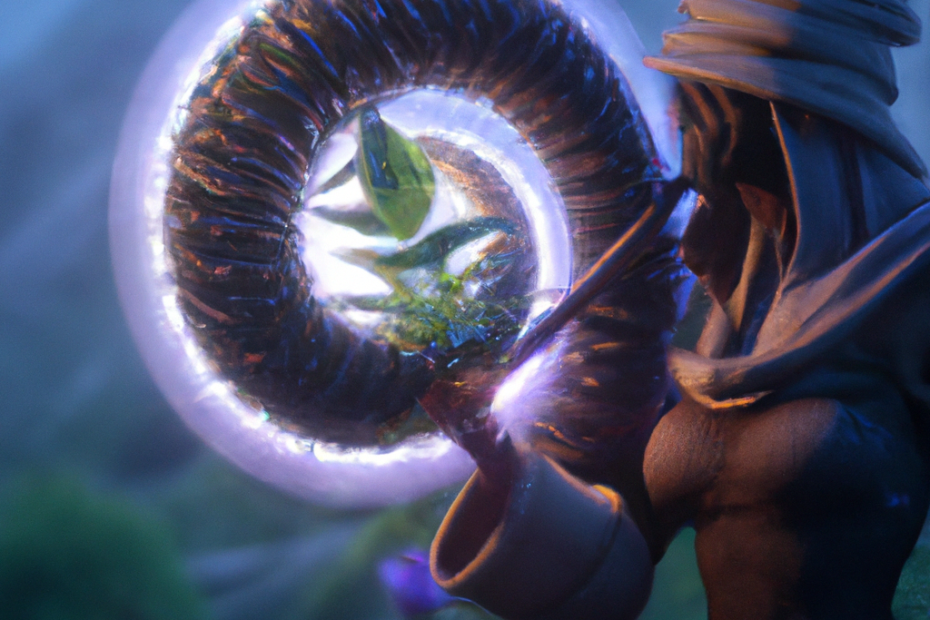Salvia Divinorum, often referred to as “sage of the diviners,” is a plant with a rich history of traditional and spiritual use among indigenous cultures. Its psychoactive properties and unique appearance have made it a popular choice for enthusiasts looking to grow their own supply.
One of the most effective methods for cultivating Salvia Divinorum is through a greenhouse setup, providing an optimal environment for its growth. In this comprehensive guide, we will explore the essential steps for creating and maintaining a greenhouse specifically tailored to the needs of Salvia Divinorum. From the optimal growing conditions and necessary materials to planting, care, and harvesting, we will cover every aspect of the process. We will delve into common pests and diseases that may affect Salvia Divinorum and how to prevent and address these issues within the greenhouse setting. Whether you’re a seasoned horticulturist or a novice enthusiast, this article will equip you with the knowledge and guidance needed to embark on your DIY Salvia Divinorum greenhouse journey.
What is Salvia Divinorum?
Salvia Divinorum, also known as Diviner’s Sage, is a psychoactive plant that has been traditionally used for spiritual and medicinal purposes by various cultures.
Its historical roots can be traced back to the indigenous Mazatec people in Mexico, who used it in shamanistic rituals to induce visions and promote healing. The plant holds significant cultural and spiritual importance in their traditions. Its psychoactive properties, particularly its active compound salvinorin A, have garnered interest in modern research for potential therapeutic effects. Some studies suggest that it may have antidepressant and anxiolytic properties, although more research is needed to understand its full range of health benefits. Its use should be approached with caution due to its potent effects, and it is important to be aware of its legal status, which varies between different countries and regions.
Why Grow Salvia Divinorum in a Greenhouse?
Growing Salvia Divinorum in a greenhouse offers several advantages, including controlled environmental conditions, optimized growth, and year-round cultivation opportunities.
This controlled environment allows for precise regulation of temperature, humidity, and light, creating optimal conditions for the plant’s growth and development. Greenhouse cultivation promotes sustainable practices by reducing water consumption and minimizing the use of pesticides.
The flexibility to grow Salvia Divinorum both indoors and outdoors provides a versatile approach, catering to varying climate conditions and ensuring a consistent supply of the plant throughout the year. These benefits make greenhouse cultivation an appealing choice for enthusiasts and researchers alike.
What Are the Optimal Growing Conditions for Salvia Divinorum?
The optimal growing conditions for Salvia Divinorum in a greenhouse encompass controlled temperature, adequate humidity, optimal lighting, proper ventilation, balanced watering, suitable soil composition, and essential nutrients for propagation and growth.
Maintaining a consistent temperature range of 70-85°F (21-29°C) is crucial, ensuring the greenhouse remains warm without becoming too hot. The humidity levels should ideally be kept between 50-80% to mimic the plant’s natural habitat.
When it comes to lighting, providing ample natural light or using full-spectrum grow lights for 12-16 hours per day is essential. Proper ventilation is vital, as stagnant air can lead to disease and pest issues. Watering should be regular but moderate, and well-draining soil with added perlite or sand is recommended. Employing propagation methods such as stem cuttings or utilizing seeds can aid in successful cultivation within a greenhouse environment.
How to Set Up a Greenhouse for Salvia Divinorum?
Setting up a greenhouse for cultivating Salvia Divinorum involves meticulous planning, suitable construction materials, efficient layout design, and the procurement of necessary resources, tools, and equipment for maintenance and care.
Understanding the specific requirements of Salvia Divinorum is essential for tailoring the greenhouse setup. Choose durable materials such as polycarbonate for the glazing to provide adequate light transmission and insulation. Ensure proper ventilation and irrigation systems for maintaining optimal growing conditions. A well-planned layout should accommodate the growth habits of Salvia Divinorum, with consideration for spacing and accessibility. Procuring essential resources such as quality soil, fertilizers, and appropriate lighting is crucial. Specialized equipment like timers, fans, and temperature controls are essential for effective cultivation.
What Materials Do You Need?
The materials required for cultivating Salvia Divinorum in a greenhouse include:
- Suitable construction materials, such as sturdy frames, UV-resistant panels, and proper insulation to provide a controlled environment for the plants.
- Specialized pots or containers, such as fabric pots or grow bags, which are essential for optimal root development and air circulation.
- High-quality soil enriched with organic matter and suitable drainage, which is crucial for successful propagation.
- Essential maintenance tools, such as pruners, watering cans, and a good quality pH meter, which are necessary for ongoing care and monitoring of the Salvia Divinorum plants.
What Is the Best Location for the Greenhouse?
Choosing the best location for a greenhouse dedicated to Salvia Divinorum cultivation involves considering dimensions, aesthetics, sustainability, and ecological compatibility within the surrounding environment.
It’s crucial to assess the sunlight exposure, ensuring that the greenhouse receives optimal light levels throughout the day. The dimensions should accommodate the growth of Salvia Divinorum, allowing space for vertical expansion if necessary.
Aesthetically, the greenhouse should complement the overall landscape while promoting sustainable practices such as rainwater harvesting and use of recycled materials. Achieving ecological harmony necessitates integration with the local fauna and flora, minimizing potential disruptions to the natural ecosystem.
How to Prepare the Soil for Salvia Divinorum?
Preparing the soil for Salvia Divinorum cultivation in a greenhouse involves ensuring proper nutrient levels, organic composition, and sustainable practices for fertilization to support the plant’s growth and sustainability.
This includes a thorough assessment of the soil’s existing nutrient content and pH levels, followed by the incorporation of organic matter such as compost or well-rotted manure to enhance the soil’s fertility. Sustainable fertilization practices, such as using natural and organic fertilizers, are crucial to avoid chemical buildup and promote long-term soil health. Balancing the soil’s nutrient composition is vital for optimal plant growth and sustainability, as it ensures that the Salvia Divinorum receives essential nutrients in the right proportions for its development.
How to Plant Salvia Divinorum?
Planting Salvia Divinorum in a greenhouse involves meticulous propagation techniques, care, and consideration of the optimal time for initiating the planting process.
Propagation of Salvia Divinorum can be started from seeds or cuttings. It is crucial to provide a warm and humid environment for successful germination and growth. Once the plants have developed roots, they need well-draining soil and consistent moisture to thrive. Regular monitoring for pests and diseases is essential.
The optimal time to initiate planting is during the warmer months when the temperature is consistently above 70°F. This ensures that the plants have ideal conditions for healthy establishment and growth.
What Is the Best Time to Plant Salvia Divinorum?
Determining the best time to plant Salvia Divinorum in a greenhouse involves considering environmental factors, seasonal variations, and climate suitability for the plant’s growth and establishment.
Salvia Divinorum thrives in warm, humid conditions, making late spring and early summer ideal for planting in most regions. This allows the plant to take advantage of longer daylight hours and warm temperatures, promoting robust growth.
Greenhouses provide a controlled environment, shielding the plant from extreme temperature fluctuations and adverse weather conditions. It’s crucial to monitor the greenhouse’s internal climate, ensuring that it mimics the plant’s natural habitat. Adequate ventilation, humidity, and light exposure play pivotal roles in fostering healthy Salvia Divinorum growth within the greenhouse.
How to Care for Salvia Divinorum in a Greenhouse?
Caring for Salvia Divinorum in a greenhouse requires attentive maintenance, proper watering techniques, regular pruning, and proactive measures to address pests and diseases using organic methods and essential nutrients.
Watering Salvia Divinorum in a greenhouse should be done cautiously, avoiding waterlogged soil. It is advisable to allow the soil to partially dry out between watering to prevent root rot.
When pruning, focus on removing dead or damaged leaves and stems to promote healthy growth. To manage pests and diseases organically, consider using neem oil or insecticidal soap.
Ensure the plant receives essential nutrients by using a balanced fertilizer formulated for Salvia species to support robust and vibrant growth.
How to Harvest Salvia Divinorum?
Harvesting Salvia Divinorum in a greenhouse involves identifying specific signs of readiness, employing proper drying techniques, and ensuring appropriate storage conditions for the harvested plant material.
Once the Salvia Divinorum plants have exhibited mature leaves and flower buds, it’s an indication that they are ready for harvest. The leaves should be plucked carefully to avoid damage, preferably in the morning when the plant’s moisture content is at its highest. The harvested leaves should then be laid out to dry in a well-ventilated area, away from direct sunlight. It’s essential to maintain a consistent airflow and monitor the temperature during the drying process to prevent mold growth. Once dried, the leaves should be stored in airtight containers, away from moisture and light to maintain their potency.
What Are the Signs That Salvia Divinorum Is Ready for Harvesting?
Recognizing the signs that indicate Salvia Divinorum is ready for harvesting involves assessing the plant’s maturity, specific time frames, and visual cues for optimal yield and potency.
Maturity of the plant is often indicated by the presence of fully developed leaves and stems, as well as the appearance of flower buds. When the plant reaches the stage of flowering, it is a good indication that it is ready for harvest. Specific time frames for harvesting may vary depending on the growing conditions, but generally, it is best to harvest Salvia Divinorum when the leaves are at their peak potency. Visual cues such as the color and texture of the leaves can also provide valuable insights into the plant’s readiness for harvesting in a greenhouse.
How to Properly Dry and Store Salvia Divinorum?
Properly drying and storing harvested Salvia Divinorum in a greenhouse involves employing preservation techniques, managing humidity levels, and utilizing suitable containers to maintain the plant material’s quality and potency.
Preservation techniques, such as air drying or using a dehydrator, are crucial for retaining the plant’s active compounds. Humidity management is essential to prevent mold growth, with an optimal range of 30-50%. Properly ventilated and sealed containers, like glass jars or vacuum-sealed bags, help preserve the plant material’s potency. Storing in a cool, dark place away from direct sunlight is also important. By following these methods, the harvested Salvia Divinorum can be effectively preserved for future use.
What Are the Common Pests and Diseases of Salvia Divinorum?
Salvia Divinorum in a greenhouse is susceptible to specific pests and diseases that require proactive prevention measures and organic treatment options to ensure the plant’s health and vitality.
Common pests such as aphids, spider mites, and whiteflies can infest Salvia Divinorum, leading to stunted growth and wilted leaves. Diseases like powdery mildew and root rot pose significant threats to the plant’s well-being.
To combat these issues, greenhouse growers can implement preventive measures such as regular monitoring, maintaining proper humidity levels, and ensuring adequate air circulation. Organic treatment options like neem oil, insecticidal soaps, and beneficial predatory insects are effective in controlling these pests and diseases while preserving the plant’s natural vitality.
How to Prevent and Treat Pests and Diseases in a Salvia Divinorum Greenhouse?
Preventing and treating pests and diseases in a Salvia Divinorum greenhouse requires a combination of proactive prevention strategies, organic treatment options, attentive care, and the maintenance of a conducive environmental setting.
These strategies are crucial to safeguard the health and vitality of Salvia Divinorum plants. Proactive measures such as regular inspection for signs of pests and diseases, maintaining proper ventilation, and implementing natural pest repellents can prevent infestations. Using organic treatment options like neem oil, insecticidal soaps, and beneficial insects can effectively address any pest or disease issues without harming the plants or the environment.
Ensuring optimal growing conditions, including appropriate watering, humidity levels, and temperature control, is essential for promoting plant resilience and reducing susceptibility to infestations.”
Frequently Asked Questions
1. What is a DIY Salvia Divinorum greenhouse setup?
A DIY Salvia Divinorum greenhouse setup is a homemade structure designed to provide optimal growing conditions for the Salvia Divinorum plant. It typically includes a controlled environment, such as temperature and humidity, to mimic the plant’s natural habitat in the Oaxaca region of Mexico.
2. What materials do I need for a DIY Salvia Divinorum greenhouse setup?
You will need materials such as PVC pipes, plastic sheeting, fans, lighting, and a thermometer to create a suitable growing environment for the Salvia Divinorum plant. You may also need tools such as a saw and drill to construct the structure.
3. Is it difficult to set up a DIY Salvia Divinorum greenhouse?
It can be challenging to set up a DIY Salvia Divinorum greenhouse, especially for those with limited DIY experience. However, with the right materials and instructions, it is possible to create a successful setup. You may also seek guidance from experienced growers or online resources for help.
4. What are the benefits of using a DIY Salvia Divinorum greenhouse setup?
A DIY Salvia Divinorum greenhouse setup allows for complete control over the growing conditions, resulting in healthier and more potent plants. It also protects the plant from external factors such as pests and harsh weather conditions, ensuring a higher success rate in cultivation.
5. Can I use a DIY Salvia Divinorum greenhouse setup for other plants?
Yes, you can use a DIY Salvia Divinorum greenhouse setup for other plants that require similar growing conditions. This includes certain herbs, vegetables, and other medicinal plants. However, it is essential to research the specific needs of each plant before attempting to grow them in the greenhouse.
6. Are there any safety precautions I should take when using a DIY Salvia Divinorum greenhouse setup?
Yes, it is crucial to take safety precautions when using a DIY Salvia Divinorum greenhouse setup. This includes proper ventilation to prevent the buildup of harmful gases, using safe and non-toxic materials, and following instructions carefully. It is also essential to keep the greenhouse out of reach of children and pets.
John Marston, a seasoned writer since 2009, has penned hundreds of articles on Salvia Divinorum across the web. As a full-time writer at a prominent online salvia retailer, he continues to contribute valuable insights, combining expertise and passion to unravel the diverse facets of Salvia Divinorum. Beyond his writing, John serves as a budtender in the cannabis industry.




